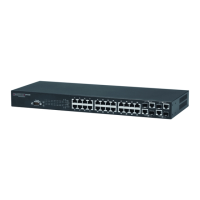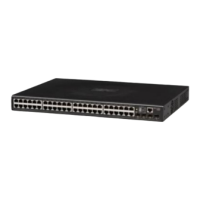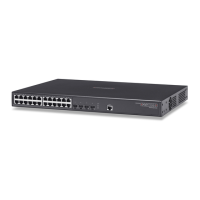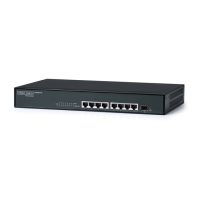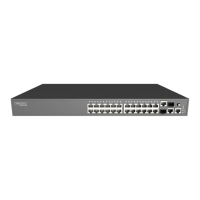C
HAPTER
35
| Class of Service Commands
Priority Commands (Layer 2)
– 820 –
COMMAND USAGE
◆ This command shares bandwidth at the egress port by defining
scheduling weights for SWDRR, or for the queuing mode that uses a
combination of strict and weighted queuing (page 818).
◆ Bandwidth is allocated to each queue by calculating a precise number
of bytes per second that will be serviced on each round.
EXAMPLE
The following example shows how to assign round-robin weights of 1 - 4 to
the CoS priority queues 0 - 3.
Console(config)#queue weight 1 2 3 4
Console(config)#
RELATED COMMANDS
queue mode (818)
show queue weight (821)
switchport priority
default
This command sets a priority for incoming untagged frames. Use the no
form to restore the default value.
SYNTAX
switchport priority default default-priority-id
no switchport priority default
default-priority-id - The priority number for untagged ingress traffic.
The priority is a number from 0 to 7. Seven is the highest priority.
DEFAULT SETTING
The priority is not set, and the default value for untagged frames received
on the interface is zero.
COMMAND MODE
Interface Configuration (Ethernet, Port Channel)
COMMAND USAGE
◆ The precedence for priority mapping is IP DSCP, and then default
switchport priority.
◆ The default priority applies for an untagged frame received on a port
set to accept all frame types (i.e, receives both untagged and tagged
frames). This priority does not apply to IEEE 802.1Q VLAN tagged
frames. If the incoming frame is an IEEE 802.1Q VLAN tagged frame,
the IEEE 802.1p User Priority bits will be used.
◆ The switch provides four priority queues for each port. It can be
configured to use strict priority queuing, SDWRR, or a combination of
strict and weighted queuing using the queue mode command. Inbound

